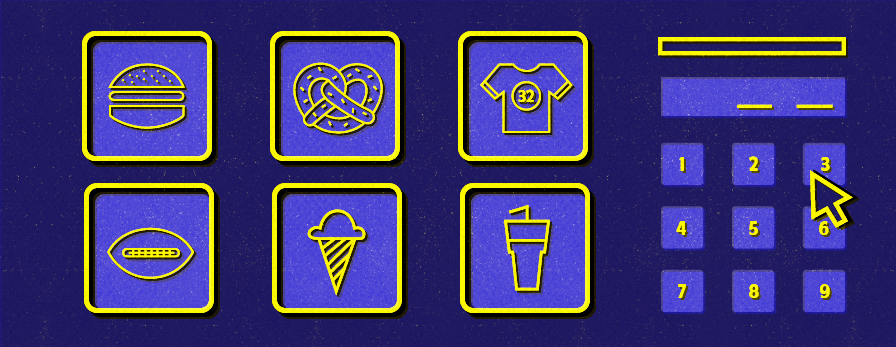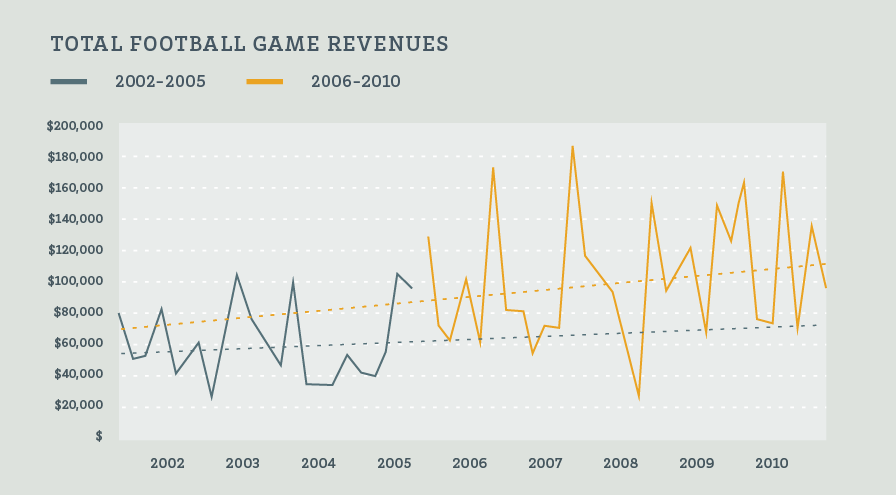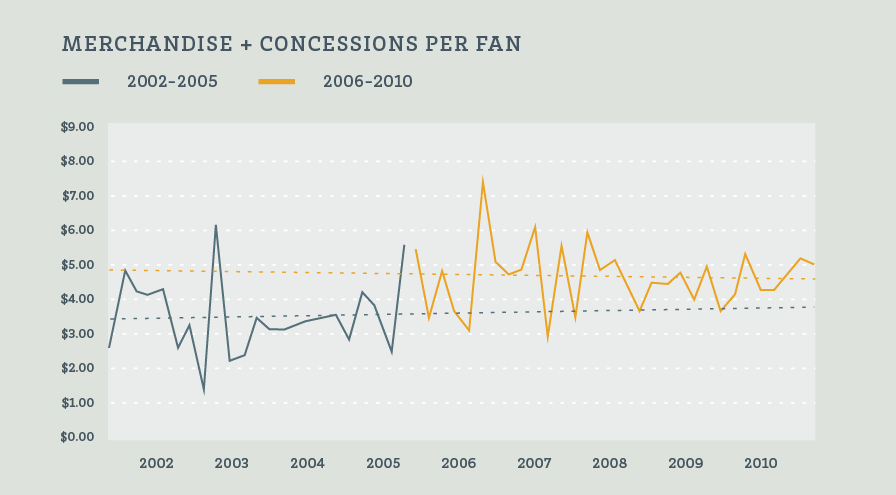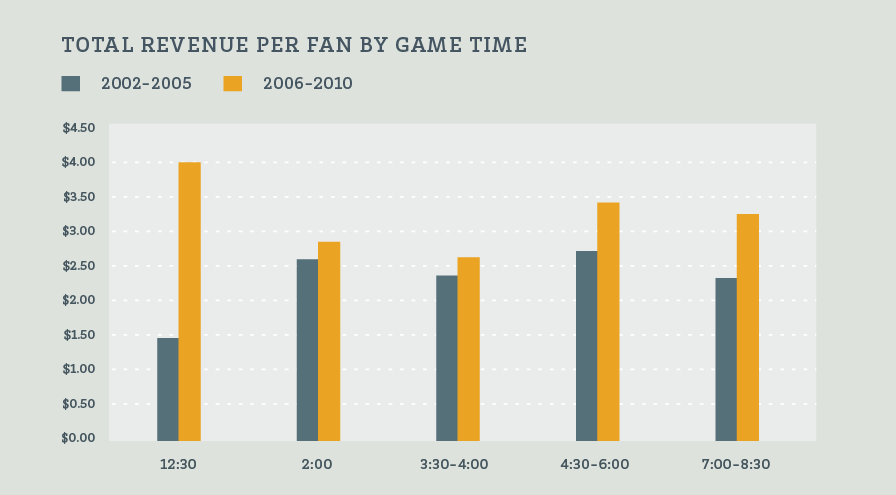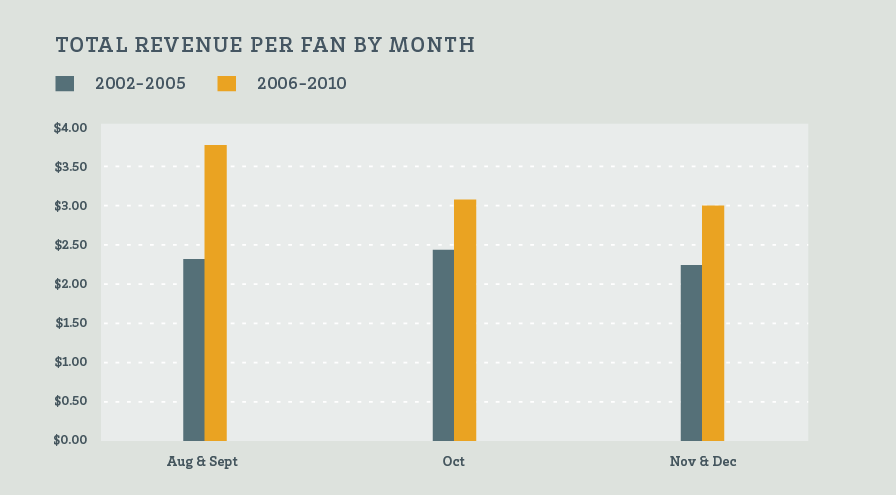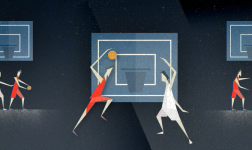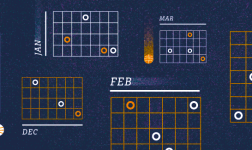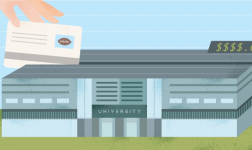
 By: Ray Purpur
By: Ray Purpur
Deputy Director of Athletics,
Physical Education and Recreation at Stanford University
Stanford built a new football stadium in 2006. Improving the fan experience and increasing revenue were two of the many goals at the drawing table. In this article, I want to share our performance in concessions and merchandise sales during the last four years at the old stadium and the first five years at the new stadium. Seating capacity for the new stadium was reduced by 35,500 seats (from 85,500 to 50,000) or (42% fewer seats in the new stadium). While attendance rose 19% over the comparable time periods, our food concessions and merchandise sales rose by 67%.3 1 The following four charts reflect that performance in four different views, using the NCAA-reported attendance figures.
In the old stadium, concessions and merchandise points of sale were primarily located on the outside of the stadium – there was no concourse for sales and informal concessions were located near the top row inside the stadium. All points of sales were at least 200 feet away from the closest seat. The old stadium had 51 total food concessions points of sale and four merchandise points of sale. The new stadium has 130 total food concessions points of sale and nine merchandise points of sale (including a complete store as compared to tables and chairs).
The old stadium had 154 women’s and 162 men’s toilet fixtures. The new stadium has 240 women’s and 266 men’s toilet fixtures. We also added four more luxury suites (from three in the old stadium to seven in the new stadium), among numerous amenities.
After the new stadium was completed, we continued to make improvements. We made it possible for students to use their meal card to get stadium fare at the football game. This has helped boost student attendance tremendously. We also added two additional video boards between the upper and lower decks. We placed five ATMs in the new stadium to drive more sales; the old stadium had one ATM near the ticket office. In the 2010 season, we experimented with credit card sales terminals for
fans to use at four points of purchase in the stadium. We will continue that experiment for the 2011 season. To make it faster for fans and to eliminate change-making errors (as well as a change bank), all prices include tax and are rounded to the dollar. Our goal is to have the lowest-priced food concessions in the Bay Area (e.g, $5 for a hotdog), which is somewhat reflected in the per fan figures in the charts above
Most recently, we announced in May of this year that Stanford stadium is Wi-Fi enabled, thanks to a partnership with AT&T. Of course Stanford is located in the heart of Silicon Valley, so the fan expectation for entertainment is technology-centric. With the proliferation of smart phones, making it easy for fans to order food and merchandise is our next focus for a win-win with fans and Stanford football: shorter lines, less staff impact and ideally, even more sales per fan. We are currently investigating several providers, including technology companies who serve professional sports and minor league baseball (a sport known for progressive fan engagement practices).
On a recent diligence visit to the Round Rock Express minor league baseball team (AAA) at The Dell Diamond stadium near Austin, TX, to evaluate Bypass Lane, I learned how simple the electronic ordering for concession food is: downloading the app, ordering the food off the menu, entering credit card information, getting a confirmation text and arrival at the pickup point where there is no line to wait. This technology moves some cash sales to credit card transactions, which reduces all the accounting of cash and provides consumers with another payment option. We will launch the solution for the 2011 football season.
What are other leaders doing, and what are some emerging trends? We are proud to feature submissions from college athletics professionals to promote best practices. We give special thanks to Ray Purpur (650 723 1820 / ray.purpur@stanford.edu) and Stanford Athletics for this article. In addition to his role at Stanford Athletics, Ray also teaches a spring 2-credit, undergraduate course entitled, The Business Practices of Sports and Recreation.
References:
- These averages are the same if we compare four years at the old stadium and four years at the new stadium, excluding the attendance from last season (fifth season) on our journey to the Orange Bowl. ↩

